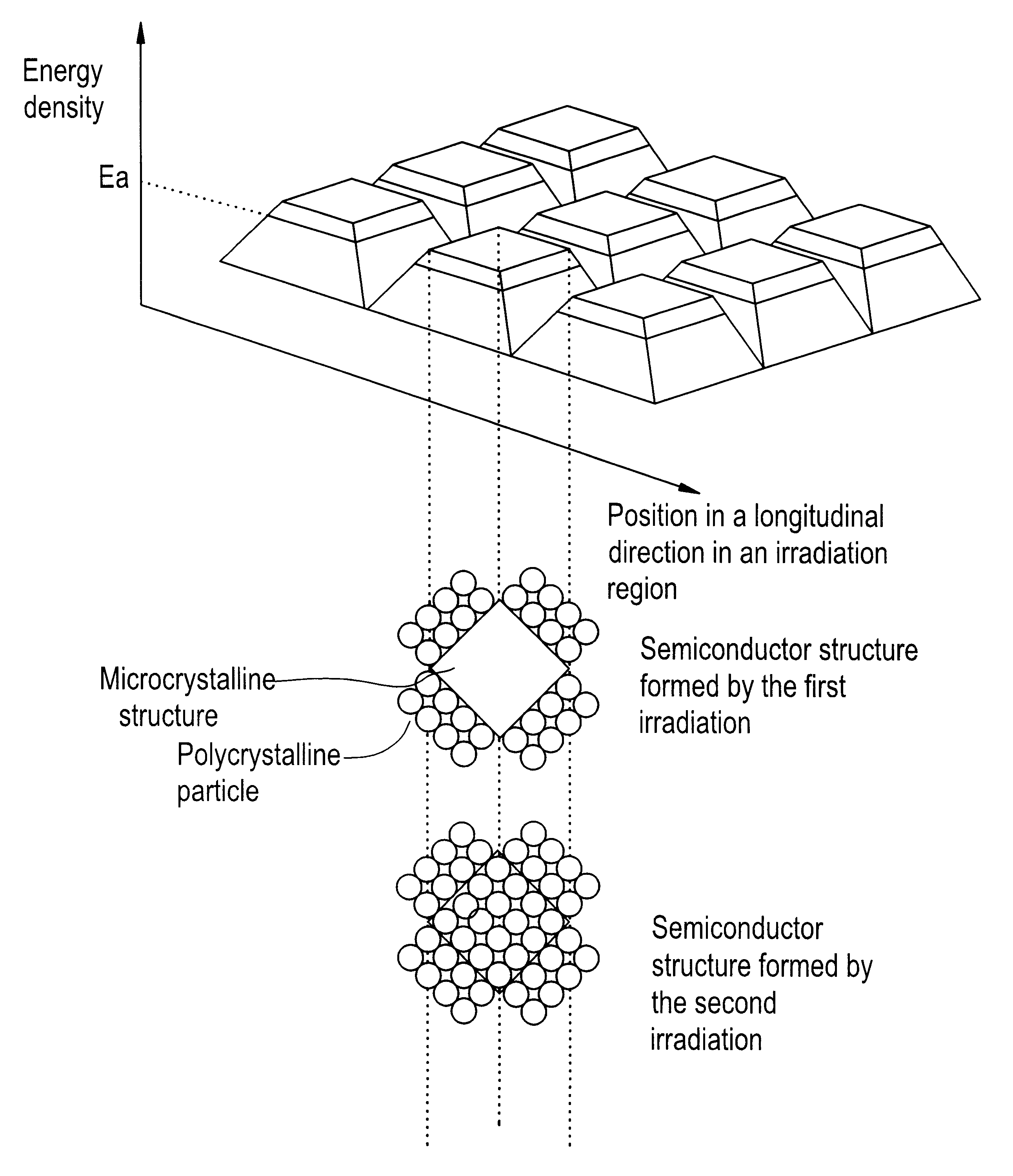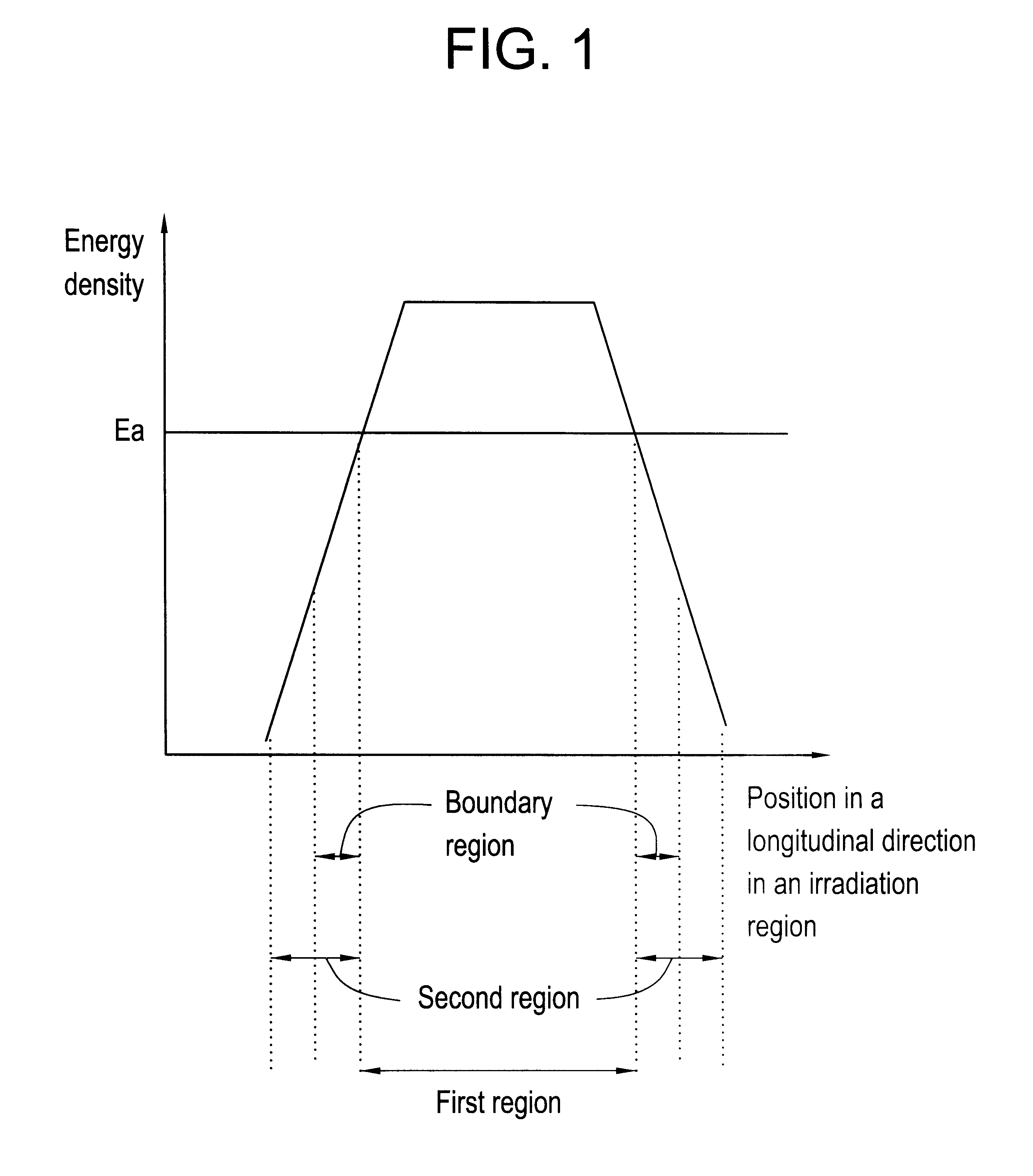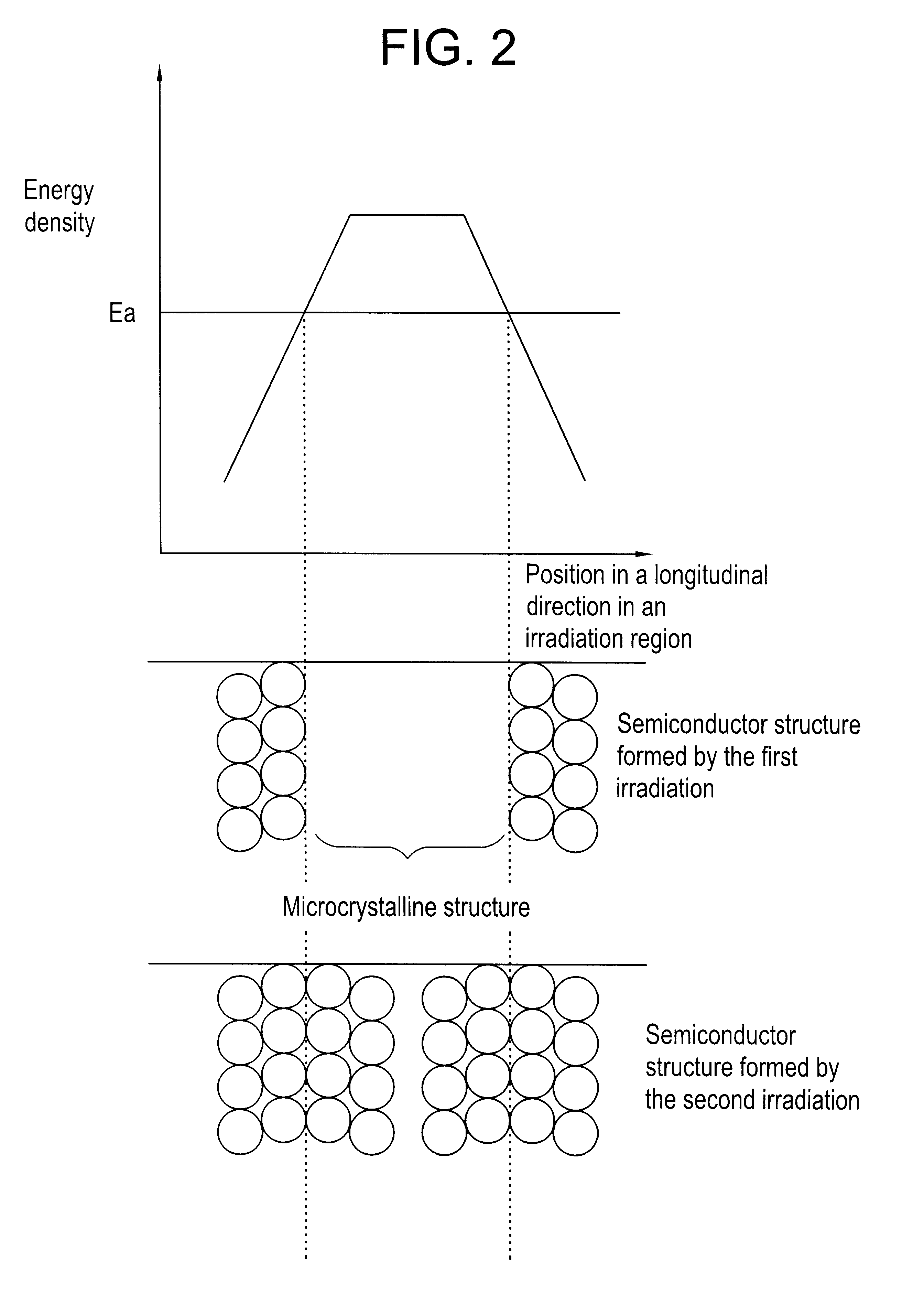Laser irradiation process
a laser irradiation and laser technology, applied in the direction of crystal growth process, gel state, polycrystalline material growth, etc., can solve the problems of uneven grain size, poor uniform crystal structure of polycrystalline silicon film, and inability to provide satisfactory polycrystalline structur
- Summary
- Abstract
- Description
- Claims
- Application Information
AI Technical Summary
Problems solved by technology
Method used
Image
Examples
example 1
The first example of this invention will be described. An amorphous silicon film was formed as follows.
A glass substrate was an OA-2 substrate (Nippon Denki Glass). On the substrate was deposited a silicon dioxide film as a base insulating film 100 nm of thickness by a plasma CVD using SiH.sub.4 and N.sub.2 O, on which was then deposited an amorphous silicon film 75 nm of thickness by a low pressure CVD using Si.sub.2 H.sub.6 under the conditions that a flow rate of Si.sub.2 H.sub.6 was 150 sccm, a pressure was 8 Pa, a substrate temperature was 450.degree. C. and a deposition duration was 70 min.
As a preliminary experiment for determining a profile, an E.sub.p was observed when a pulse laser beam with a wavelength of 308 nm and a pulse width of 50 nm was irradiated on the amorphous silicon film. FIG. 11 shows dependency of an average grain size in a polycrystal structure on an energy density when one pulse laser beam was irradiated on the amorphous silicon film or a polycrystalline ...
example 2
The second example of this invention will be described. A glass substrate was an OA-2 substrate (Nippon Denki Glass). On the substrate was deposited a silicon dioxide film as a base insulating film 100 nm of thickness by a plasma CVD using SiH.sub.4 and N.sub.2 O.
On the substrate was then deposited an amorphous silicon film 50 nm of thickness by a low pressure CVD using Si.sub.2 H.sub.6 under the conditions that a flow rate of Si.sub.2 H.sub.6 was 150 sccm, a pressure was 8 Pa, a substrate temperature was 450.degree. C. and a deposition duration was 46 min.
A preliminary experiment indicated that when the film thickness was 50 nm, E.sub.a and E.sub.p for a pulse laser beam with a wavelength of 308 nm and a pulse width of 50 nm were 420 and 470 mJ / cm.sup.2, respectively.
In the light of the results, a beam profile having a shape as shown in FIG. 3 was chosen in this example, and the maximum energy density, the width of the first region with an energy density of E.sub.a or higher, the w...
example 3
The third example of this invention will be described. In this example, energy profiles in both longitudinal and transverse directions in a beam irradiation region met given conditions.
A glass substrate was a 1737 substrate (Corning). On the substrate was deposited a silicon dioxide film as a base insulating film 100 nm of thickness by a plasma CVD using SiH.sub.4 and N.sub.2 O.
On the substrate was then deposited an amorphous silicon film 75 nm of thickness by a plasma CVD using SiH.sub.4 and H.sub.2 under the conditions that a flow rate of SiH.sub.4 was 150 sccm, a flow rate of H.sub.2 was 400 sccm, a pressure was 100 Pa, a discharge power was 0.1 W / cm.sup.2, a substrate temperature was 320.degree. C. and a deposition duration was 8 min. After deposition, the product was subject to dehydro-annealing at 400.degree. C. for 2 hours. When using a pulse laser beam with a wavelength of 248 nm and a pulse width of 35 nm, E.sub.a and E.sub.p for the amorphous silicon film were 480 and 550 ...
PUM
| Property | Measurement | Unit |
|---|---|---|
| energy density | aaaaa | aaaaa |
| energy density | aaaaa | aaaaa |
| width | aaaaa | aaaaa |
Abstract
Description
Claims
Application Information
 Login to View More
Login to View More - R&D
- Intellectual Property
- Life Sciences
- Materials
- Tech Scout
- Unparalleled Data Quality
- Higher Quality Content
- 60% Fewer Hallucinations
Browse by: Latest US Patents, China's latest patents, Technical Efficacy Thesaurus, Application Domain, Technology Topic, Popular Technical Reports.
© 2025 PatSnap. All rights reserved.Legal|Privacy policy|Modern Slavery Act Transparency Statement|Sitemap|About US| Contact US: help@patsnap.com



